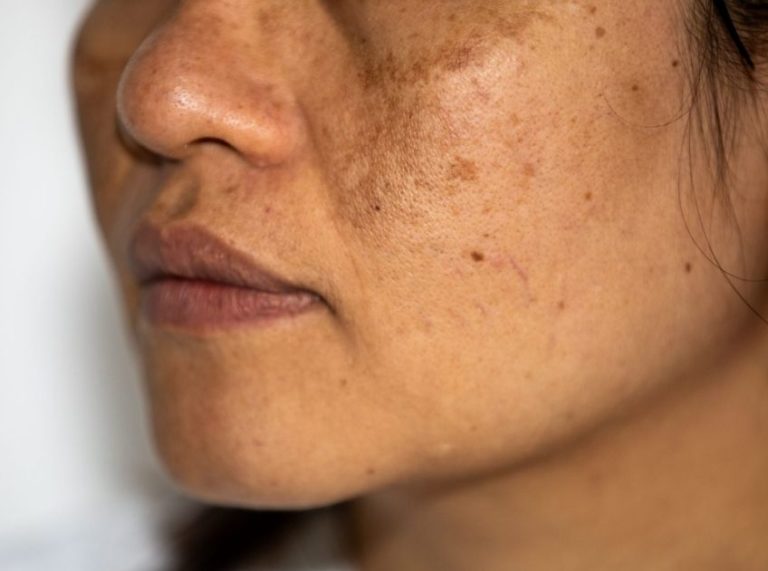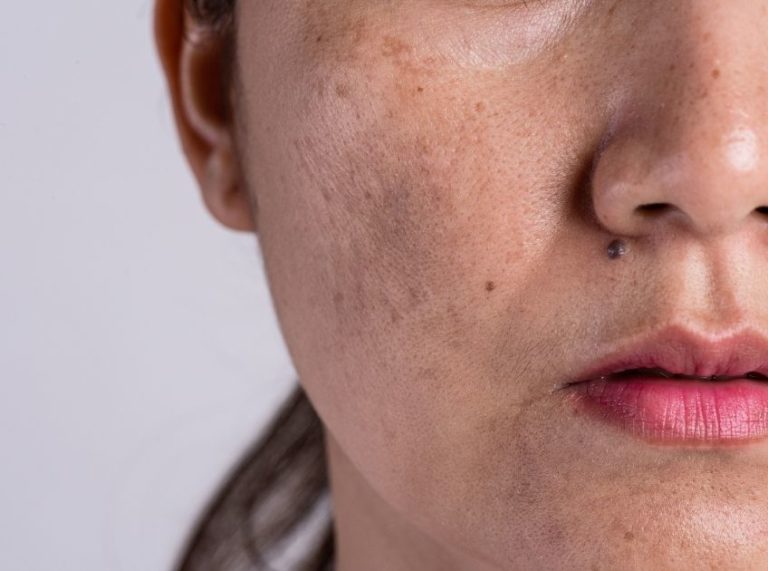
Important: This article is for informational purposes only. Please read our full disclaimer for more details.
Neem oil has long been a trusted solution in Ayurvedic and holistic care. Packed with powerful antibacterial, antifungal, and anti-inflammatory properties, it’s the secret weapon for healthier skin and stronger hair.
This guide dives into why neem oil is so effective and how you can easily make it at home—without long, complicated processes. Get ready to nourish your beauty naturally!
Why Neem Oil is a Game-Changer for Hair and Skin
Neem oil (1) has earned its reputation as a go-to remedy for various beauty concerns—and for good reason. It’s packed with bioactive compounds that target the root of common hair and skin issues. Whether you’re dealing with a flaky scalp or stubborn acne, neem oil can offer powerful, natural relief.
For Hair:
- Strengthens Hair Follicles: The antioxidants in neem oil help promote blood circulation to the scalp, strengthening hair from the roots and reducing breakage.
- Fights Dandruff: Its antifungal and antibacterial properties help eliminate the microbes that cause dandruff and itchiness.
- Encourages Growth: By maintaining scalp health and unclogging hair follicles, neem oil supports longer, healthier hair.
- Soothes Scalp Irritation: Its anti-inflammatory compounds calm redness, flaking, and scalp sensitivity.
For Skin:
- Treats Acne: Neem oil contains fatty acids and antibacterial agents that combat acne-causing bacteria while keeping the skin hydrated.
- Fades Scars: Regular use can reduce the appearance of acne marks and pigmentation due to its regenerative properties.
- Reduces Inflammation: It calms inflamed skin and is beneficial for conditions like eczema and psoriasis.
- Hydrates Skin: Neem oil helps lock in moisture, especially for dry, cracked skin, without clogging pores.
What Makes Neem Oil So Effective? The Science Behind It
Neem oil’s effectiveness lies in its unique chemical profile. One of its primary active ingredients, azadirachtin, is known to disrupt the life cycle of bacteria and fungi, making it a natural disinfectant (2).
Other key components include:
- Nimbin and Nimbidin: These compounds are responsible for neem’s anti-inflammatory and antifungal activity, helping soothe irritated skin and scalp (3).
- Quercetin: A flavonoid that acts as an antioxidant and skin-soothing agent.
- Vitamin E and Essential Fatty Acids: These provide deep nourishment and promote skin and hair repair.
According to a 2011 study in the Journal of Ethnopharmacology, neem oil demonstrated significant antimicrobial effects against various pathogens. Another study in the Indian Journal of Dermatology confirmed neem’s benefits in treating acne and chronic skin conditions like dermatitis (4).
By combining these bioactive compounds, neem oil offers a holistic and scientifically supported approach to natural hair and skin care.
Key Ingredients That Do the Heavy Lifting
- Neem Leaves: Rich in antioxidants and antibacterial agents
- Carrier Oil (Coconut or Olive): Deeply nourishing, enhances penetration
- Fenugreek (optional): Fights dandruff, stimulates growth
- Amla (optional): Boosts vitamin C and adds shine
Adjust the ingredient ratios based on your skin and hair type. For oily skin or scalp, reduce the amount of carrier oil slightly. For dry types, increase it for added moisture.
Safety First: Is Neem Oil Right for You?
Neem oil is generally safe for most skin and hair types when diluted. However, always do a patch test—especially if you have sensitive skin.
When to discontinue use:
- If you notice redness, rash, or itchiness after application
- If your skin feels excessively dry or irritated
- If your scalp develops a flaking or burning sensation
Stop using it and consult a dermatologist if any symptoms persist.
Best 2 DIYS Neem Oil for Skin and Hair
DIY #1: Classic Neem Oil for Hair Strengthening
This recipe is ideal for hair fall and dandruff control.
Ingredients:
- 1 cup fresh neem leaves (washed)
- 1 cup coconut oil
- Optional: 1 tbsp fenugreek seeds
Directions to Use:
- Heat the coconut oil on a low flame
- Add neem leaves and fenugreek seeds
- Simmer for 10–15 minutes until leaves turn brown
- Strain and store in a clean glass bottle
How to Apply:
- Warm the oil slightly before use
- Massage into scalp using fingertips
- Leave it on for at least 1 hour or overnight
- Wash off with a mild shampoo
DIY #2: Neem-Infused Face Oil for Clear, Healthy Skin
Perfect for acne-prone or inflamed skin types.
Ingredients:
- 1/4 cup dried neem leaves
- 1/2 cup olive oil
- Optional: 5 drops of tea tree oil
Directions to Use:
- Place neem leaves in a glass jar
- Pour olive oil over the leaves
- Seal and let it infuse in sunlight for 5–7 days
- Strain and store in a dropper bottle
How to Apply:
- Cleanse your face before application
- Use 2–3 drops and massage gently
- Apply before bedtime
- Rinse in the morning if needed
Frequently Asked Questions (FAQ’S)
1. Can I use neem oil daily?
A. No. Use it 2–3 times a week for best results to avoid skin or scalp dryness.
2. Can neem oil be applied directly?
A. Not recommended. Always dilute with a carrier oil to avoid irritation.
3. How long does homemade neem oil last?
A. When stored in a cool, dark place, it lasts up to 6 months. Use clean tools to avoid contamination.
Final Thoughts
Neem oil is a natural powerhouse for both hair and skin, offering targeted solutions for dandruff, acne, dryness, and more. With the right ingredients and careful use, you can harness its full benefits at home. Start small, stay consistent, and see how this ancient remedy transforms your beauty routine!















